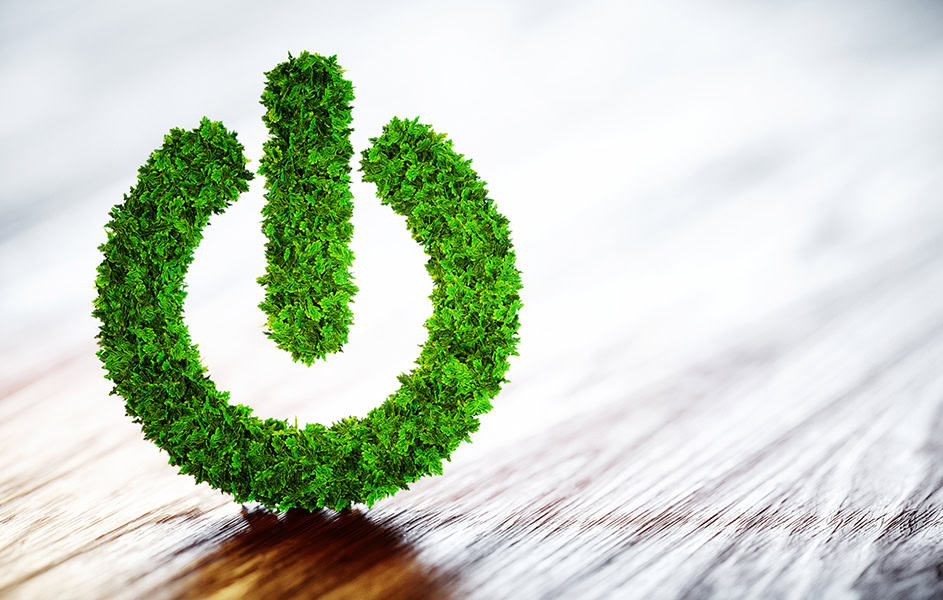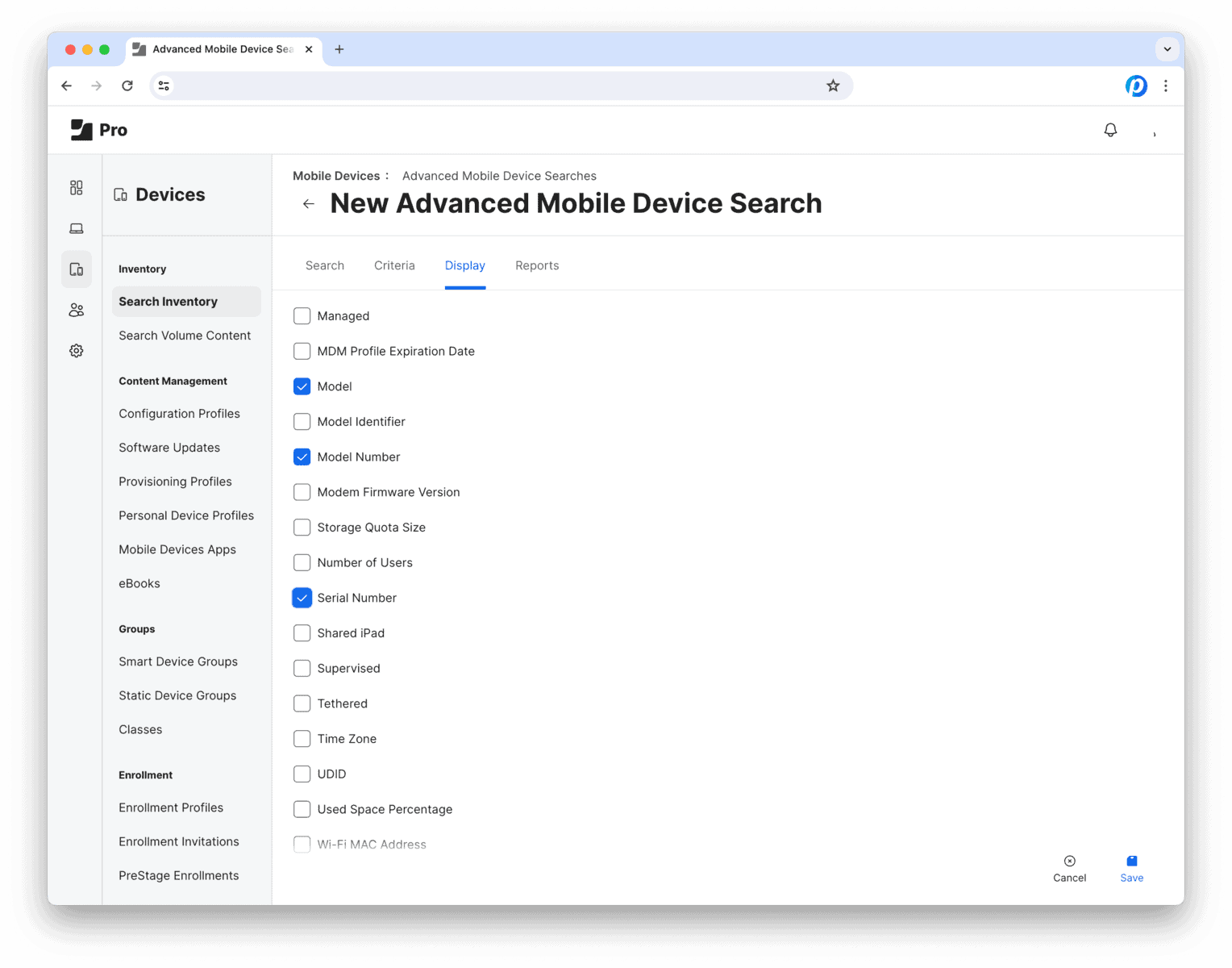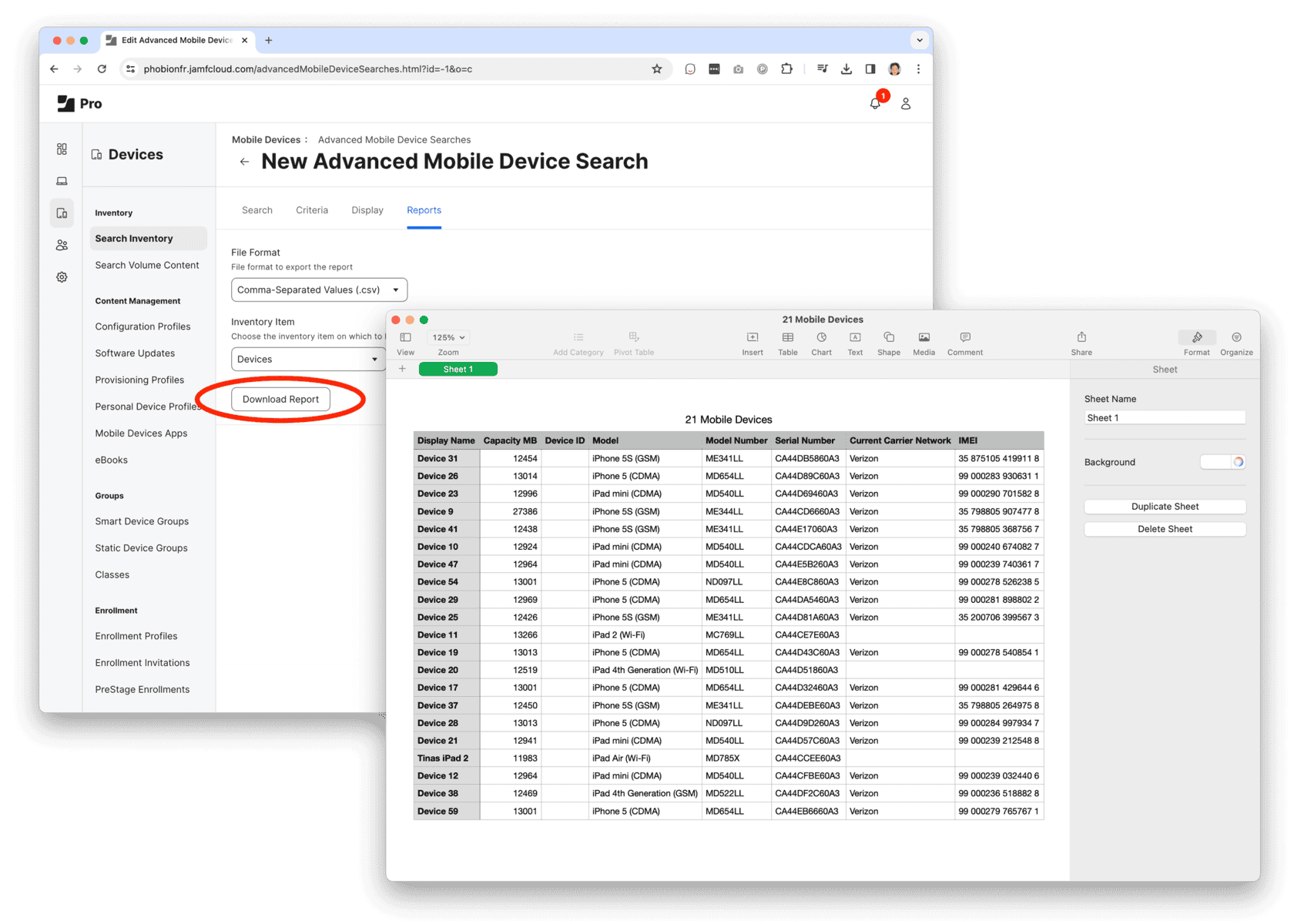Device trade-ins are required by law in 25 states to go through a recycling process to keep as much of these electronics out of landfills.
The responsible re-use and recycling of used electronics extends the lifespan of devices and is a vital source for precious materials in the manufacture of new products. This reduces our global dependency on conflict mineral sourcing, which funds both violence and deforestation in developing countries. This also keeps tons of electronic devices out of landfills.
Let’s talk about how device trade-in fuels sustainable progress for our planet.
First, Some Statistics
Mobile Devices
There are nearly 16 billion operational mobile devices in the world as of 2022, up from 14 billion in 2020. That’s more than two devices per human being on the planet. Of course, any of these devices are used by corporations rather than people, which raises those numbers. There are going to be 18.2 billion mobile devices in use by 2025.
These numbers don’t include other electronics, such as TV monitors, desktops, laptops, computer monitors, and IoT devices.
Further, 6.65 billion people on Earth use a smartphone, which is 83.75 percent of the world’s population. It’s a technological advance that isn’t going away and needs a large amount of resources to keep going. As technology advances into 5G networks and 6G networks (IoT) for greater data utilization and upload speeds, newer and more advanced mobile devices will continue to come to market.
In 2021, a total of 1.54 billion mobile devices were sold in the entire world.
In the United States alone, 294 million people use mobile devices and 126.3 million new devices were shipped to retailers.
Between 100 and 120 million mobile devices are thrown away every year in the United States alone. These devices head to landfills, not e-waste recyclers.
Phone companies love upgrades. Because the devices are so small, it’s impossible to upgrade hardware easily, and it’s simpler for consumers just to buy new ones. The average smartphone user in the United States purchases a new phone every 18 months.
Now expand this throwaway statistic to the rest of the world, and it’s not good. Some countries don’t have recycling mandates, nor do they have clean water laws.
These discarded mobile devices will have dire and lasting impacts on our environment, if they haven’t already, in several ways.
Laptop & Desktop Computers
There are more than 2 billion computers in the world, and nearly 350 million new ones were sold in 2021.
Recycling 1 million laptops in the United States alone saves the energy equivalent to the electrical output used by more than 3,500 American homes in a single year.
Computers contain:
- Gold
- Silver
- Platinum
- Palladium
- Copper
- Nickel
- Tantalum
- Cobalt
- Aluminum
- Tin
- Zinc
- Neodymium
An average computer contains 1/5th of a gram of gold, or about $12 worth.
Multiply this by the 30 to 40 million computers that are ready for end-of-life management every year in the United States, and that equates to 12,600 pounds of gold companies can extract every year, which is 151,600 troy ounces (12 ounces to a pound). In 2022, that’s worth about $288 million of gold per year at $1,900 per ounce.
Computers are a literal goldmine for recycling, and gold and other metals can be recycled rather than mined anew.
E-Waste as a Whole
E-waste is defined as any electronic waste that people no longer want or has been made obsolete by newer technology.
E-waste comes from televisions, DVD players, stereos, copiers, fax machines, tablets, computers, and mobile devices.
The world discarded 53.6 million tons of e-waste in 2019.
Of this, only 17.4 percent was recycled, according to the United Nations. That means 44.3 million tons of e-waste ended up in landfills in 2019.
The value of the raw materials lost in landfills for the US alone is estimated at $7.49 billion.
Environmental Impacts of Mobile Phones & E-Waste
The EPA states that for every 1 million cell phones we recycle, our society recovers:
- 17.5 tons of copper
- 772 pounds of silver
- 75 pounds of gold
- 33 pounds of palladium
There are other metals that can be recycled from cell phones and their batteries, including:
- Lithium, in lithium-ion batteries
- Aluminum, often used in cell phone casings
- Cobalt, sometimes found in batteries
- Lead, a toxic metal used in soldering small parts together
- Nickel, found in electrical connectors and capacitors
- Zinc, found in circuit boards
Nearly all cell phones require 16 of the 17 rare-earth metals, elements classified as such because they only exist in small pockets around our planet. China controls a large portion of rare-earth metal mining and exporting.
Let’s not forget that plastics come from petroleum, which is extracted from the Earth for oil, gasoline, petrochemicals, and plastics creation.
Around 80 percent of a mobile device’s carbon footprint occurs during the manufacturing stage, and it’s not just due to greenhouse gasses. Pilings of leftover ores accumulate at manufacturing sites, and these seep into groundwater.
As much of 80 percent of a cell phone can be recycled, including the plastic casing, the screen, and the battery. You also have to think about the packaging that new mobile devices come in for paper and cardboard, because those substances cannot be recycled limitlessly like metals can.
Environmental Impact of Computers
One computer and one monitor require 500 pounds of fossil fuels, 50 pounds of chemicals, and 1.5 tons of water for manufacturing, notes the American Association for the Advancement of Science.
In 2019 alone, around 3.75 million tons and 10.72 million tons of e-waste went to developing countries to be dumped. Once there, we have no control over what happens to the e-waste, and it can poison local water supplies. Plus, it took more fuel to transport the waste there!
Guiyu, China, is one prominent example of this practice. The town receives e-waste from the United States. Electronics are dumped in the town, and they litter the streets. Residents are poisoned due to the high levels of lead found in the e-waste. Lead is a known neurotoxin that can cause brain damage, particularly in children.
Around 40 percent of all heavy metals in U.S. landfills come from discarded electronics, and this includes lead and other poisonous substances, according to EPEAT. Keep in mind that municipal water systems may clean out lead, but well water for rural homes will not.
According to Deloitte, technology exists to extract and recycle the rare-earth metals in every mobile device. Up until just a few years ago, extracting rare-earth elements was deemed commercially unviable.
Now, retrieving and recycling these minerals is commercially vital.
Saving the environment is a top priority for device manufacturers. However, the facts about conflict minerals are more about the human toll of manufacturing rather than the environmental impact.
What Are Conflict Minerals?
These minerals include tin, tantalum, tungsten, gold, and cobalt, all of which are vital to the operation of IT devices like cell phones, usually in their circuit boards or in their batteries.
Conflict minerals are minerals sourced from countries or entities that fund wars and cause human rights abuses. This typically occurs in countries that have weak state governments. Mining these elements is a lucrative business, and there are millions of dollars that can flow through these mining activities.
What Countries Are Affected Most by Conflict Minerals?
In the United States, the legal definition of conflict minerals includes tin, tantalum, tungsten, and gold sourced from the Democratic Republic of Congo and neighboring countries.
Democratic Republic of Congo’s Situation
The Democratic Republic of Congo (DRC) is the principal reason why the term “conflict minerals” exists. (Not to be confused with its neighbor to the south, Congo.)
The DRC regularly mines diamonds, gold, copper, cobalt, and zinc.
The DRC is the second-largest country in Africa by land area, and it’s in a tropical zone that includes lush rainforests and amazing biodiversity. It’s also had ongoing internal wars since the 1990s. It has more than 5.5 million displaced people within the country itself, who are forced to move because of warlords and guerilla fighting groups who control most of the country and the economy. Nearly three-fourths, or 73 percent, of the DRC’s population is living in extreme poverty despite the mineral wealth within this country.
Widespread and near-constant conflicts affect the residents of the DRC. In 2016, 1.4 million people were displaced when government forces clashed with rival factions in the Kansai region in the southern part of the country. The leader of the breakaway Kansai region was killed in the fighting, which led to even more conflict.
The Democratic Republic of Congo is responsible for mining:
- 1.3 million tons of copper, fourth-most in the world
- 100,000 tons of cobalt, the top producer in the world at 70 percent of global production
- 2 percent of the world’s tin
Conflict minerals may spill over into neighboring countries, such as:
- Sudan
- Central Africa Republic
- Uganda
- Congo Republic
- Angola
- Tanzania
- Rwanda
- Burundi
- Zambia
Myanmar’s Rebel Uprising
Myanmar is responsible for 54,000 tons of tin production every year, third-most in the world.
Yet the country saw a massive upheaval in 2016 and 2017, with many tin mines falling into the hands of rebel groups with deplorable human rights records. China, a neighbor, imports 96 percent of Myanmar’s tin ore for its own domestic production of tin.
Although not technically a conflict mineral, Myanmar’s tin production may be tainted with human rights abuses.
Why Are Conflict Minerals So Important?
These minerals are vital to the function of electronic devices and mobile devices. They are necessary for companies that manufacture them, and some major suppliers simply don’t care that they come from nations that have human rights abuses.
For example, China imports 53 percent of the Democratic Republic of Congo’s tin, which means China participates in the conflict mineral supply chain.
Why Conflict Minerals Are Horrible
Purchasing conflict minerals from the Democratic Republic of Congo funds warlords in the DRC, who often enslave people to work in mines and utilize child labor. Lawlessness and human rights abuses are some of the worst in the world here.
Conflict minerals also destroy tropical forests in the region. Widespread corruption in the DRC has led to deforestation to the tune of 2.5 million acres of tropical forests over the past five years alone. The DRC is second only to Brazil regarding rapid deforestation. At 0.8 metric tons of carbon per acre, 2.5 million acres of forest would remove 2 million metric tons of carbon from the atmosphere every year.
What You Can Do About Conflict Minerals
The United States and the European Union both require companies to disclose conflict minerals sources. Companies such as Apple are taking steps to include sourcing information for the minerals used in their products. They are trying to minimize their reliance on conflict minerals as much as possible. Apple hopes to eliminate sourcing of conflict minerals entirely by 2030.
You, as an individual, can ask to see a company’s list of sourcing for metals and materials used in mobile device manufacturing.
Another thing you can do is to recycle and trade-in your mobile devices. It prevents the need for new materials to be used, and it weakens or eliminates conflict minerals from funding warlords in Africa.
Mining Versus Recycling
The American Chemical Society states that it is 13 times cheaper to recycle metals from e-waste than it is to mine it based on recycling e-waste in China.
Why?
Because all it takes is for people to bring in their electronics. There is no transportation of metal ores. No smelting. No refining. The metals are all right there, in their pure forms, waiting to be re-used.
To make one single smartphone, companies need 62 different kinds of metals and metallic substances. 70 pounds of ore must be mined using around 100 gallons of water. Multiply this by the billions of smartphones produced every year, and the numbers are staggering.
The mobile device industry requires 335 tons of gold every year.
Recycling aluminum is 90 percent more efficient than mining it.
In fact, all metals can be recycled indefinitely and an infinite number of times without losing their purity or effectiveness. This includes iron, aluminum, gold, silver, and every rare-earth metal used in electronics production.
What does it take to mine metals?
- Mining companies must destroy the vegetation, trees, and wildlife of mountain ranges or fields.
- The landscape is irrevocably altered due to explosives and digging.
- Chemicals and petroleum used in mining machines can seep into groundwater supplies.
- Mining companies use equipment that consumes fuel that emits carbon dioxide, a chief greenhouse gas.
- Industrial chemicals refine raw ore into the pure metals needed for electronic components.
- After the mine is completely used up, companies must reclaim the mine to restore it to a natural habitat as much as possible. That can take years or even decades.
In 2016 alone, carbon dioxide emissions from mining aluminum ore (bauxite), gold, iron, and copper were above 189 million metric tons.
The percentage of greenhouse emissions per smartphone include:
- 80 percent for manufacturing
- 16 percent for customer use
- 3 percent for transport
- 1 percent for recycling
What if we recycled more smartphones? We could lower our carbon footprint significantly.
What Initiatives Are Being Done to Recycle More Mobile Devices & Computers?
Companies, organizations, and governments alike are trying to make recycling electronics easier.
SERI
Sustainable Electronics Recycling International (SERI) maintains standards, certifications, and a directory of companies who engage in the electronics end-of-life cycle. There, you can find more than 977 facilities in 34 countries that are certified in responsible recycling (R2) practices with regards to electronics.
SERI-certified firms pledge to keep as much e-waste out of landfills as possible while fostering a circular economy (more on this later) for used electronics.
Consumers and companies can contact an SERI-certified company to make sure their electronics are disposed of safely and securely.
Circular Computing
Circular Computing in Great Britain is one of several companies that repurposes older laptops and recycles them to emerging economies. In the process, the company promises to plant five trees for every laptop the company remanufactures. Circular Computing has planted more than 1 million trees thus far.
Apple’s Daisy & Dave Robots
In 2020, Apple pledged to have a carbon-neutral supply chain by 2030.
This is a lofty goal, considering where it gets raw materials for its products.
Device trade-in and recycling is one major component of their push for carbon neutrality by the end of the decade.
As such, the vaunted device company needs technological help.
Enter Daisy, an iPhone-munching robot. Daisy can take apart 15 different iPhone models to get them ready for recycling. Not only that, it can do so at the rate of 200 per hour. The robot separates and sorts high-quality components for recycling. Daisy robots remove iPhone batteries, screws, and modules using a four-step process.
Then, instead of sending these components to recyclers, Apple announced in 2020 it was keeping their minerals extraction process in-house thanks to Dave, the next-generation recycling robot. Dave disassembles components and recovers key materials from each iPhone’s Taptic Engine, including rare-earth magnets, tungsten, and steel.
Apple’s Sourcing
Apple also claims to have strict supply chain sourcing through third-party audits to keep conflict minerals out of its supply chain while using more recycled materials. The tech giant claims its iPhone 13 is constructed of 99 percent recycled tungsten and 98 percent rare-earth metals as well as 100 percent recycled gold in its logic board plating and 100 percent recycled tin within the solder and battery management unit.
The company also claims its 14-inch MacBook M1 Pro has an aluminum enclosure made of 100 percent recycled aluminum, and it’s the first MacBook constructed from 100 percent recycled rare earth elements in all its magnets. Of course, Apple offers incentives for people to trade-in its devices.
Developing Circular Economies
Companies like Apple can incentivize circular economies by offering to purchase older devices or use them as credit towards new ones.
Some other great ones to look at include:
Sonos, a speaker company, offers a trade-in program to give you a 30 percent discount on a new sound system. When you consider a new one can cost multiple thousands of dollars, you could save quite a few hundred bucks.
Peloton, the vaunted exercise machine company, provides a $700 rebate on yoga and toning accessories when trading-in a used Peloton bike for a new one.
Motorola, one of the top cell phone companies in the world, with whom Phobio has a partnership. Users can trade-in their Motorola phones for new ones while getting a discount.
Vodafone announced a circular economy initiative in early 2022. Starting with its European market, the electronic device giant is creating a platform that will make it easier for users to trade-in their old devices for new ones while offering competitive prices for high-quality refurbished models that are cheaper than new ones. It’s also going to offer insurance against breakages of new phones.
AT&T, Verizon, and T-Mobile all have recycling programs of some sort, and Best Buy accepts old phones for recycling. But you might not get a lot of cash for these programs.
How Can We Create a Sustainable, Circular Economy With Device Trade-Ins?
A circular economy with device trade-ins represents one way we can help people around the world.
What is a circular economy?
The Ellen McArthur Foundation defines a circular economy as “designing out waste and pollution, keeping products and materials in use, and regenerating natural systems.”
Companies and governments are largely responsible for the first and third principles of a circular economy because they have the financial and legal clout to start a circular economy.
But it takes an investment from individuals, too.
Governments and companies already see the benefits of this model because they have larger revenue streams to consider.
Everyone who uses electronic devices can keep products and materials in use by trading them in. This gives devices a new life when consumers are ready to purchase something new.
The loss of secondary devices to landfills is estimated at $57 billion worldwide.
Putting more of these devices into a circular economy is a huge economic gain for everyone involved in the industry.
What happens to old devices in a circular economy?
Many devices are cleaned up, repaired, and re-sold to customers as used.
For computers, this generally means devices that are six years old or newer. Considering a new laptop is outdated every two years, companies and individuals can still find used equipment that works on modern protocols and standards, provided it’s upgraded properly.
Insurance companies often use refurbished devices as replacement models. Manufacturers also use them to make new devices. Older devices are shipped to developing countries where people can utilize them for schools, jobs, and keeping in touch with loved ones without the added costs associated with a top-of-the-line model.
Companies stand to benefit from a circular economy for electronic devices, too.
Thousands of businesses bought new laptops and tablets to ensure their employees had reliable equipment to keep business moving forward and to access all of those Zoom calls when the pandemic hit. (So much so that it caused a chip shortage that still plagues the devices and auto industries, even two years after the pandemic started).
Similarly, many school systems purchased tablets (new or used) for students and teachers to keep them connected and learning during lockdowns.
Companies that traded in old equipment en masse lowered the costs of their new equipment purchases because they received some financial benefits from recycling the older equipment. It kept the old equipment from collecting dust in storage closets, and it kept the equipment out of landfills.
How do companies benefit from trade-ins?
Many consumers feel they want to be associated with companies that have sustainable practices. In fact, 60 percent of consumers state that sustainability factors into their purchasing decisions.
When companies are better stewards of the environment, they stand to gain business.
Device trade-ins can improve the quality of life for people in emerging markets.
Many computer, tablet and cell phone trade-ins are re-sold to consumers in emerging markets and developing countries where the average citizen may not be able to afford a new device. Yet these devices work just fine and don’t need a lot of upgrades (if any) to operate.
Some are sold to people in the United States who cannot afford or prefer the cost of a pre-owned device.
When people are able to purchase an affordable, high-quality used electronic device, it makes a world of difference in their ability to be connected and pursue an education or career.
For countries as a whole, investment in technology is crucial to growth.
Researchers at Brookings see a link between technology innovation and national economic prosperity, job creation and long-term economic development.
The report highlights that infrastructure investment in things like broadband in emerging markets can have a drastic effect on local economies and people.
America. has also long had a digital divide with rural areas sometimes locked out of broadband access. Used devices can help bridge this digital divide.
Imagine if 1 million devices traded in went to a developing country in Africa where people could have better access to educational tools. They could lift people out of poverty to improve their quality of life.
Why Encourage & Incentivize Device Trade-Ins?
Manufacturers have many reasons to incentives and encourage device trade-ins.
Recycling circuit boards of devices is more valuable and cost-effective than mining for new materials. One ton of circuit boards may contain 40 to 800 times more gold than one metric ton of raw ore. Further, a ton of circuit boards contains 30 to 40 times more copper than in one metric ton of ore mined from the ground.
Plastics in e-waste can be recycled into garden furniture and then sold as a secondary market for sustainable decor companies.
Battery components can be reused in other batteries, whether they are for devices or EVs. Metals can be used in jewelry (gold, silver) and automotive parts (aluminum and steel).
According to EPEAT, if the recycling rates for gold (just 15 percent), silver (also 15 percent), and platinum (a paltry 5 percent) all increased to 100 percent, the electronics sector could realize $12 billion in financial and natural capital benefits.
Saves Energy
One recycled cell phone that goes back into the secondary market saves enough electricity to charge a laptop for 44 hours. There are 130 million cell phones thrown away every year. Recycling those would produce enough energy to power over 24,000 homes for one year in the United States.
Prevents Health Problems
Some metals in cell phones may cause environmental pollution. The lead in them can cause cancer and brain damage. Mercury, also found in electronic devices, can cause severe sensory impairments, muscle weakness, or memory loss in humans.
Boosts the Metals Economy
The metals industry in general stands to gain from device trade-ins. Ferrous and non-ferrous metal recycling sustained 395,000 jobs and created $14 billion in wages in 2016 in the United States alone. Those figures only stand to go up with device-trade in initiatives.
Lowers Energy Consumption
The energy used to recycle aluminum is just 5 percent of the energy used to extract and refine bauxite, the ore used in aluminum mining. Using less energy saves on fossil fuel consumption where you have coal-fired or fossil fuel-fired energy plants.
People Get Money
The average American replaces their mobile devices every 18 months. Let’s say someone gets $300 for their older device as a credit towards a new one. That $300 they would have spent can go towards other stuff like a car payment, savings account, paying down credit card debt, and more.
Great for Public Relations
As we started earlier, device trade-ins are great for your public relations. Brand trust move upwards when the company charts a new course towards sustainability.
Encourage More Urban Mining
Urban mining is the term used to denote the process of extracting metals from electronic devices already manufactured and recaptured through recycling.
What Do I Do Before Trading in My Device?
Before you trade-in your older mobile device, take a few steps to ensure your privacy.
- Talk to your service provider. If you’re still on a cell phone plan, make sure you can trade in the older device for a newer one based on your plan’s stipulations. Sometimes, service providers offer discounts for upgrades on certain phones.
- Wipe old data. Get rid of any personal data on your device, such as your logins, PINs, passwords, and any financial information through payment apps. Clear out any apps that you had on it before. The simplest way to do this is through a factory reset. Any device trade-in company worth their salt will show you how to reset the device to factory specs.
- Do your research. Whether you trade in a computer or mobile device, research reputable companies to see how other people have reviewed them. How long has the company been in business? Who does the company affiliate with? Will the company give you a good deal? You can also search online to see what the selling price is for your particular device. Reduce that figure by about 30 to 40 percent to see what a company should give you for your used device.
What Companies & Manufacturers Encourage Device Trade-Ins?
Most device manufacturers for computers and smartphones encourage recycling and device trade-ins that allow you to upgrade to newer models at a cheaper upfront cost. Third-party specialists that refurbish, remarket, and resell devices are also great choices here. Look for certified refurbishers and recycling companies. Typically, they’ll have certifications from top-level manufacturers or international organizations that state the company follows certain processes for upgrading older devices to meet modern standards.
Phobio is the premier trade-in service for mobile operators and iconic consumer brands in North America.
Through our custom trade-in software platform, Phobio connects businesses with the expansive global secondary market for consumer electronics and other durable goods. Phobio trade-in programs drive growth for retailers offering their customers the opportunity to increase their own purchasing power by giving their old device a second life.
We also elevate the customer experience with user-friendly software and outstanding customer service. Our staff is proud to play an important role in the circular economy and contribute to a cleaner planet.
We have a four-fold solutions model:
- Online trade-in, where the consumer and the device company transact completely online before the consumer mails the device to the company. Both the consumer and the company interact with the platform throughout the transaction.
- In-store/retail trade-in, where our platform works on in-store devices and computers to foster the sale.
- Bulk IT asset buyback, perfect for ITAD companies that buy and remarket wholesale computer equipment from companies and organizations.
- Manufacturer trade-in, where we foster trade-ins between consumers and device manufacturers of any size.
Talk to us to see what Phobio can do for you! We look forward to working with you to create a more sustainable future with electronic device trade-ins, from smartphones and tablets to laptops and desktops.








